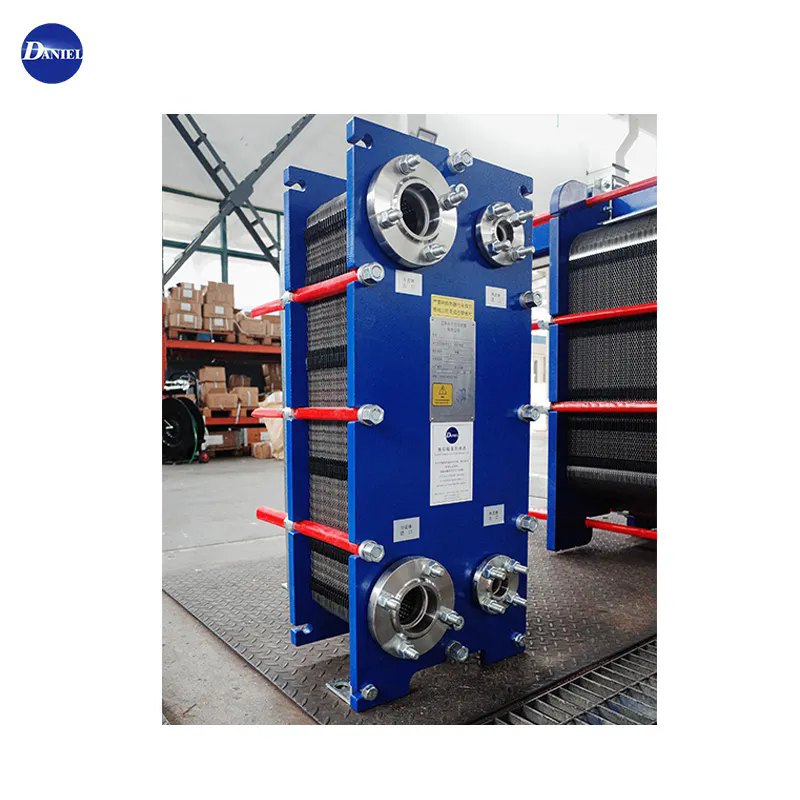Understanding Plate Heat Exchangers: Efficiency in Heat Transfer
2024-10-08
Heat exchangers play a vital role in various industries, enabling efficient heat transfer between fluids while preventing them from mixing. Among the different types of heat exchangers, plate heat exchangers (PHEs) have gained popularity due to their compact design, high efficiency, and versatility. In this blog, we will explore the fundamentals of plate heat exchangers, their applications, advantages, and maintenance tips.
What is a Plate Heat Exchanger?
A plate heat exchanger consists of multiple thin, corrugated plates stacked together, creating channels for two fluids to flow in parallel. The heat transfer occurs as the fluids pass through these channels, allowing heat to be exchanged without the two fluids coming into direct contact. PHEs are commonly used in applications where efficient heat transfer is required in a compact footprint.
How Does a Plate Heat Exchanger Work?
The operation of a plate heat exchanger is straightforward:
1. Fluid Inlet: Two fluids enter the heat exchanger from opposite sides. One fluid is typically hot, while the other is cold.
2. Flow Arrangement: The design of the plates creates channels for each fluid to flow through, often arranged in a counterflow or crossflow pattern. This arrangement enhances the efficiency of heat transfer.
3. Heat Exchange: As the fluids flow through the plates, heat is transferred from the hot fluid to the cold fluid through the plate material. The corrugated surface of the plates increases the surface area for heat transfer, making the process highly efficient.
4. Fluid Outlet: After passing through the channels, the fluids exit the heat exchanger, with the hot fluid cooled and the cold fluid heated.
Applications of Plate Heat Exchangers
Plate heat exchangers are widely used across various industries due to their adaptability and efficiency. Common applications include:
- Food and Beverage Industry: PHEs are used for pasteurization, sterilization, and cooling processes, where maintaining hygiene and temperature control is critical.
- HVAC Systems: In heating, ventilation, and air conditioning systems, plate heat exchangers efficiently transfer heat between water and air, ensuring optimal climate control.
- Chemical Processing: PHEs facilitate heat recovery and cooling in chemical processes, contributing to energy efficiency and cost reduction.
- Power Generation: In power plants, plate heat exchangers help transfer heat between fluids in processes like cooling turbines and condenser systems.
- Pharmaceuticals: In pharmaceutical manufacturing, PHEs ensure precise temperature control during production processes.
Advantages of Plate Heat Exchangers
1. High Efficiency: Plate heat exchangers offer superior heat transfer performance compared to traditional shell-and-tube heat exchangers, thanks to their large surface area and enhanced flow patterns.
2. Compact Design: The design of PHEs allows for a smaller footprint, making them suitable for applications with space constraints.
3. Flexibility: Plate heat exchangers can be easily expanded or modified by adding or removing plates, allowing for adjustments to meet changing process requirements.
4. Ease of Maintenance: PHEs are easier to clean and maintain than other heat exchangers, as the plates can be easily disassembled for thorough cleaning and inspection.
5. Cost-Effectiveness: The energy savings resulting from their efficiency often lead to lower operational costs over time.
Maintenance Tips for Plate Heat Exchangers
Proper maintenance is essential for ensuring the longevity and efficiency of plate heat exchangers. Here are some tips:
1. Regular Inspections: Schedule routine inspections to identify any signs of wear, corrosion, or fouling on the plates.
2. Cleaning: Depending on the application and fluid characteristics, regular cleaning of the plates is crucial. Cleaning can be done mechanically or chemically, depending on the fouling type.
3. Monitor Performance: Keep an eye on pressure drops and temperature differences across the heat exchanger. Significant changes may indicate fouling or other issues that need addressing.
4. Seal Checks: Inspect seals and gaskets for wear or damage, as leaks can occur if these components are not in good condition.
5. Follow Manufacturer Guidelines: Always refer to the manufacturer’s guidelines for specific maintenance requirements and recommendations.
Conclusion
Plate heat exchangers are an essential component in various industries, providing efficient heat transfer in a compact design. Their versatility, high efficiency, and ease of maintenance make them a popular choice for numerous applications.
Understanding the working principles, advantages, and proper maintenance of plate heat exchangers can help businesses maximize their performance and reliability. As industries continue to prioritize energy efficiency and sustainability, plate heat exchangers will undoubtedly play a pivotal role in achieving these goals. Whether you're in food processing, HVAC, chemical manufacturing, or power generation, investing in a quality plate heat exchanger can significantly impact your operations.



